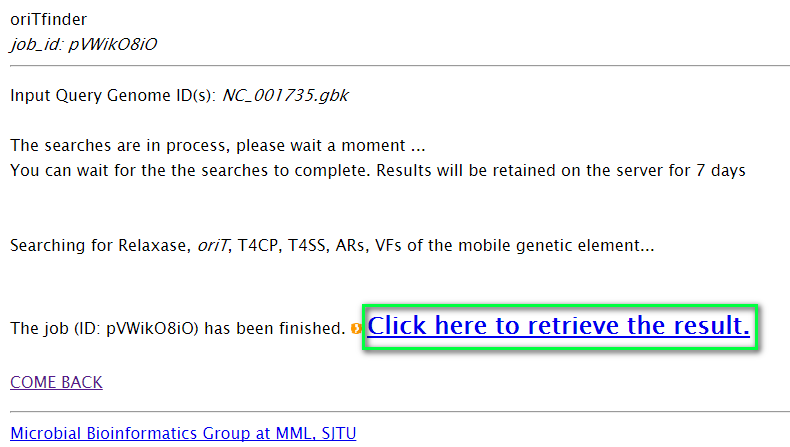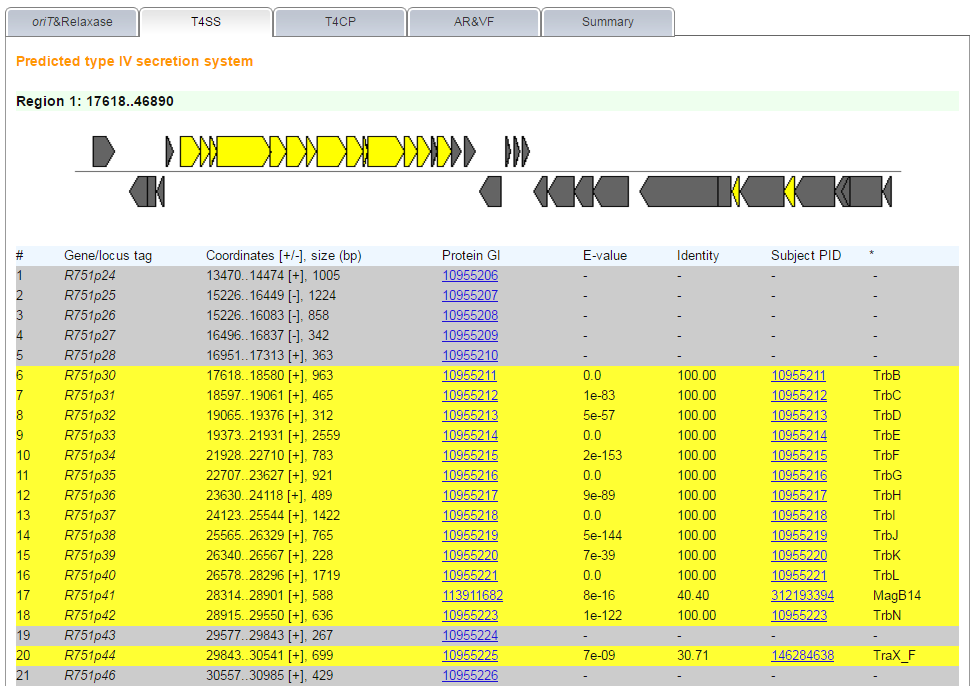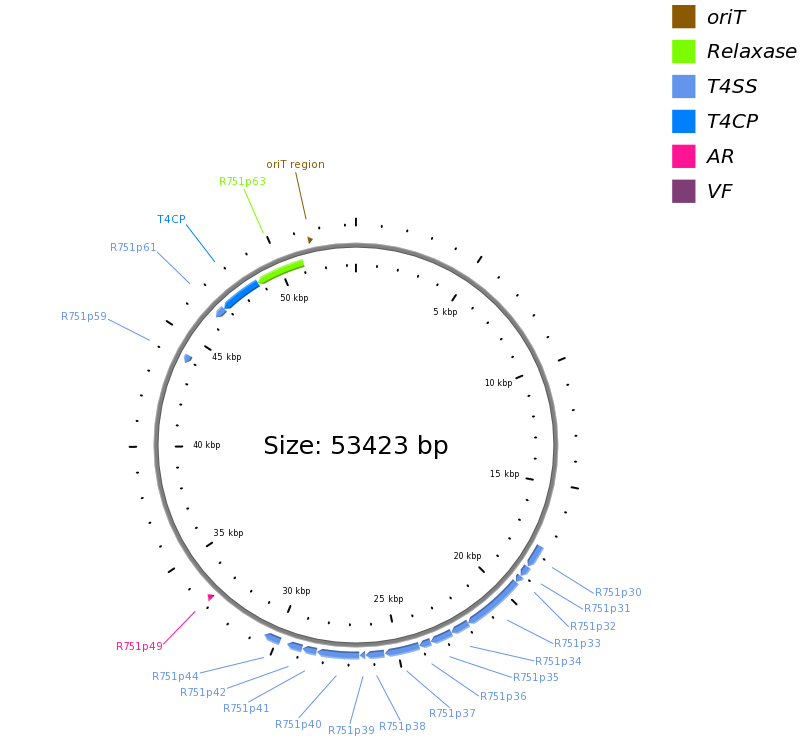
| oriTfinder: a web-based tool for the identification of origin of transfers in DNA sequences of bacterial mobile genetic elements |
| 1. Input data | |
|
1.1 You can upload one MGE sequence and and annotation in the GenBank format. [ 
Note: When you download the GenBank file from the NCBI database, please select the GenBank(full) format, just as the following screenshot.  1.2 You can also upload one MGE sequence in the FASTA format (the multi-FASTA file is acceptable). [  |
|
| 2. Run oriTfinder - Predict | |
Get your input ready? oriTfinder will start to find oriT immediately after you click the button “Run”.  Note: Depending on your input, the time consuming of oriTfinder may vary. When oriTfinder is running, the following page will be shown to users.  |
|
| 3. Retrieve results - Predict | |
| You can get the analysis results with the Job ID or the link (shown in blue) provided on the running page.
Note: Please note that there is NO SPACE in your job ID provided by oriTfinder. As the Job ID is generated randomly, and may be not so easy to remember, we recommend that you just copy it to your clipboard, and paste when you retrieve the result. Sorry for the inconvenience it may cause.  |
|
| 4. Report of job | |
|
Your analysis result is shown on the report page. Various information is given and organized under four tabs (oriT&Relaxase, T4SS, T4CP and ARG&VF).
Note: Origin site of DNA transfer predicted by oriTfinder are shown under the "oriT&Relaxase" tab, you can find all the related information towards the oriT region, including the coordinate, length, inverted repeats, conserved nick region, etc. Moreover, this tab provide the visual representation of oriT region. The relaxase is a key parameter to predict oriT region of MGE. Thus we also display the information of relaxase in this tab. If you need further detail of each oriT or relaxase, please click on the link shown in blue. An oriT&Relaxase tab looks like this:  A T4SS tab looks like this:  A T4CP tab looks like this:  The AR&VF tab looks like this:  A summary tab looks like this:  | |